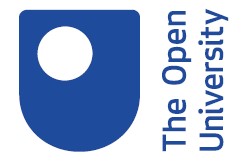A new national consortium, co-led by the University of Cambridge, will bring together mathematical modellers to produce faster, more rigorous predictions for the COVID-19 pandemic and advise UK government bodies.
The JUNIPER consortium (‘Joint Universities Pandemic and Epidemiological Research’) brings together leading mathematical and statistical modellers from seven UK universities and has received £3 million in funding from UK Research and Innovation (UKRI).
JUNIPER is developing and using customised models to provide predictions and estimates on key questions about the COVID-19 pandemic. These results feed regularly into SPI-M, the modelling group that provides evidence to the Scientific Advisory Group for Emergencies (SAGE) and the wider UK government.
Examples of modelling JUNIPER provides to government includes:
- Understanding how new variants are spreading across the UK and developing statistical models to determine whether new variants are causing more hospitalisations or deaths.
- Forecasting and providing real-time estimates of the R-value, using data from sources such as Pillar 1 and 2 testing, hospital data and mobility data. They are currently providing eight of 12 models contributing real-time R estimates that go from SPI-M to SAGE each week.
- Modelling the effectiveness of different testing strategies on virus transmission and suppression, and modelling the effect of vaccinations and predicting outcomes from different scenarios of how to ease lockdown restrictions.
Professor Julia Gog, co-lead of the consortium from Cambridge’s Department of Applied Mathematics and Theoretical Physics, said: “By bringing research groups together from our seven universities we can provide predictions and estimates about the pandemic to address questions from the government with unprecedented speed. By combining the right expertise together swiftly across research teams we can now respond to questions in less than 24 hours, which might have taken a week for one team working alone. And further, being able to call upon specialist expertise combinations across multiple research groups means we can provide more robust outputs.
“In this unprecedented pandemic, modelling has been hugely important to provide evidence-based predictions and estimates at great speed. Our insights from transmission modelling are fully integrated with scientific evidence from other disciplines and feed into government decision-making.”









